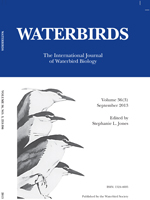Gull-billed Terns (Gelochelidon nilotica) are among the most widespread, yet scarce, Charadriiformes in the world. Two subspecies are recognized in the United States: G. n. aranea breeds along the U.S. Atlantic and Gulf coasts and G. n. vanrossemi breeds in the Salton Sea and San Diego Bay of California. Conservation concerns exist for the species due to its low abundance in the United States and apparent declines in some parts of its North American range. We used nuclear microsatellite markers and mitochondrial DNA sequences to assess genetic diversity and differentiation patterns among Gull-billed Tern populations from Virginia, Texas, and California. We also tested for evidence of population bottlenecks, and evaluated the support our data provide for the North American subspecies. Genetic diversity was highest in Texas and underscored the importance of habitat in that large population. Significant population differentiation existed, but could not be consistently identified using various analytical approaches and suggested that the magnitude of differentiation was low. No evidence for bottlenecks was identified. Our data could not distinguish individuals from different subspecies and therefore do not support the current intraspecific taxonomy. Tenable explanations for many findings are related to the low site tenacity demonstrated by the species.
How to translate text using browser tools
1 October 2013
Genetic Structure, Diversity and Subspecies Status of Gull-billed Terns (Gelochelidon nilotica) from the United States
Mark P. Miller,
Thomas D. Mullins,
Susan M. Haig
ACCESS THE FULL ARTICLE

Waterbirds
Vol. 36 • No. 3
September 2013
Vol. 36 • No. 3
September 2013
Gelochelidon nilotica
genetic structure
Gull-billed Terns
microsatellite DNA
mitochondrial DNA
subspecies




